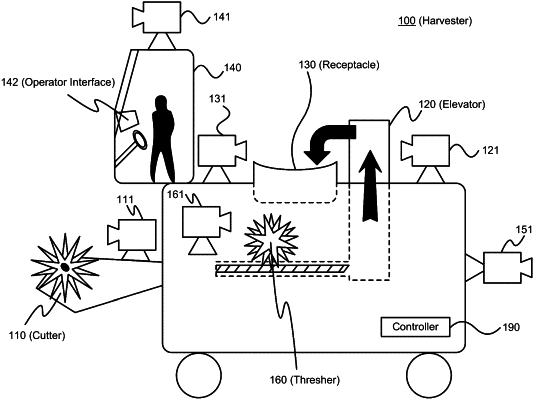| CPC A01D 41/127 (2013.01) [A01B 79/005 (2013.01); A01D 41/1274 (2013.01); G05B 13/0265 (2013.01); G06N 5/04 (2013.01); G06N 20/00 (2019.01); G06T 7/0002 (2013.01); G06T 7/0004 (2013.01); G06T 7/97 (2017.01); G06V 20/188 (2022.01); H04N 23/90 (2023.01); G06T 2207/20081 (2013.01); G06T 2207/30188 (2013.01)] | 17 Claims |

|
1. A computer-implemented method for detecting impurities of harvested plants in a receptacle of a harvester, the method comprising:
receiving, from a camera facing contents of the receptacle, an image of the contents;
applying the image as input to a first machine learning model;
receiving, as output from the first machine learning model, identification of an impurity of the harvested plants;
determining a current state of one or more physical components of the harvester;
applying, as input to a second machine learning model, both the current state of the one or more physical components of the harvester and the output from the first machine learning model of the identification of the impurity;
generating a control signal based on output of the second machine learning model;
transmitting the control signal to an operator interface that, responsive to receiving the control signal, provides an operator of the harvester with a recommended state change for the harvester;
determining a response of the operator to the recommended state change; and
causing the first machine learning model to adjust its outputs based on the response.
|